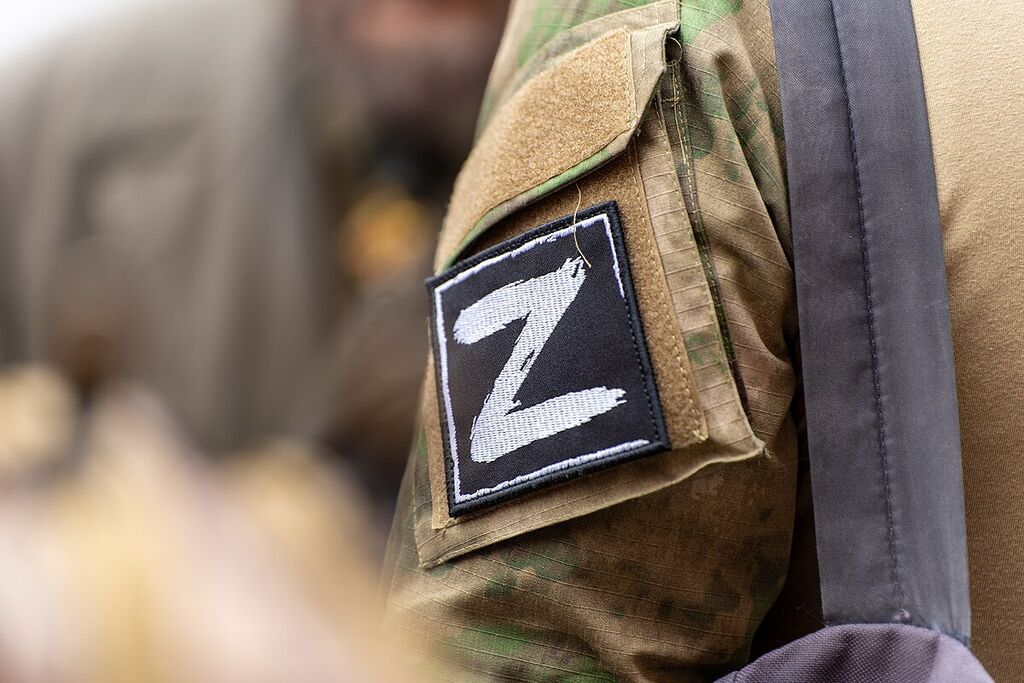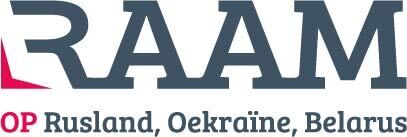After Russia’s full-scale invasion of Ukraine in February 2022, an extensive network of channels appeared on Telegram run by propagandists, 'war correspondents' and other sincere supporters of Russian aggression. They form a distorted picture of a reality in which Russia is fighting a just war. Researchers and media outlets call this network of channels 'Z-channels'. Researcher Ivan Philippov analyses them and writes about it on Na Zzzzzаpadnom fronte bez peremen (On the Wwwwwestern Front Without Change), his own channel. Meduza asked him to unpack the world of Z-Telegram, in which he spends two hours a day.

The letter 'Z' from the Latin alphabet became the official symbol of Russian aggression (Foto: Wikimedia Commons)
By Meduza
What kind of channels can we call Z-channels?
There are two obvious criteria: 1) the authors must support the Russian invasion of Ukraine, and 2) they must regularly write about the war.
What does Z-world represent?
In a very schematic way, Z-world can be divided into several groups:
- Television propagandists: Vladimir Solovyov, Armen Gasparyan, Vasily Yakemenko, Yulia Vityazeva, and their many junior associates (e.g., Frontovyi Zametki).
- The 'experts' serving television propagandists: these regularly appear on various programs. For example, the authors of Rybar (according to The Bell, the project received money from Yevgeny Prigozhin and may be connected with the FSB), Fighterbomber, Razvedos Advanced Gear & Equipment (the authors of the latter two channels host the program '333' on Solovyov Live).
- 'Courtier war correspondents': second-row propagandists who sit at the same table with Putin: Alexander Kots, Dmitry Steshin, Alexander Sladkov, Ekaterina Agranovich, etc. are the 'court war correspondents'.
- Channels related to the Russian Ministry of Defense, including those associated with army command: 'the Kherson Herald,' 'Zaporizhzhia Front,' channels associated with the VDV (paratroopers), and brigades of the self-proclaimed LNR and DNR.
- Aggregators that mainly collect 'patriotic' content rather than create it: 'Military Informant,' 'Turned on Z War,' 'Operation Z: War Correspondents of the Russian Spring.' Judging by subscribers, these are among the most popular channels.
- A network of channels praising the head of Chechnya, Ramzan Kadyrov: this seems their only task, together with vilifying the 'war correspondents' who are undesirable to Kadyrov. Namely, this is 'Coffee with Garlic and Pepper' and a dozen of its satellites, such as 'Koshkin Sibiryak.'
- A group of channels directly or indirectly related to Wagner Group: this includes channels that sympathize with it (and which are still active after the deaths of Yevgeny Prigozhin and Dmitry Utkin): Grey Zone, 'Unloading Wagner,' 'the Thirteenth,' Alex Parker Returns, 'TopaZ Says.'
- Groups of natsbols (a combination of ultranationalism and communism): Black Hundreds, monarchists, etc. These groups mostly support the full-scale invasion.
- Channels of servicemen or people who are in close proximity to the front: 'Philologist in the grey zone,' 'Zapiski Veteran.' There are also different factions within this group.
Can we classify them in other ways?
Yes, you can come up with all sorts of classification principles.
Sometimes Z-channels can be lumped into one group because they’re all involved in one big PR campaign. For example, in the summer of 2022, some media and propagandists wrote that the Russian army had a special group called 'O' (an abbreviation for Otvazhnie, or 'Daredevils'), which allegedly 'played a decisive role in a number of episodes in the special military operation.' According to the propagandists, the basis of this group is made up of soldiers from the Central Military District (CMD), which at that time was commanded by Colonel General Alexander Lapin.
Information about the 'Daredevils' was spread by the pro-Kremlin tabloid 'Life' (the author of an article in 'Life' even tried to put the letter O on a par with Z and V), as well as the Telegram channels Rybar, Razvedos Advanced Gear & Equipment, 'Bayraktar Witnesses' (which is a channel by RIA Novosti 'war correspondents' Alexander Kharchenko and Sergei Shilov) and 'war correspondent' Alexander Kots. RIA Novosti itself also wrote about the existence of 'Daredevils.'
Ruslan Leviev, the founder of CIT, believes that General Lapin personally came up with the idea of 'Daredevils': he tried to turn the tactical sign into a brand for his group, while the 'military correspondents' helped promote the idea at his request.
Are they ideological?
It’s impossible to answer that question with scientific accuracy. Many of them do quite sincerely believe in the 'Russian world,' in Russia’s 'liberating mission,' and in other myths to justify the war.
These channels make for an interesting read. Their authors often have doubts about what’s going on (albeit minimal). But, as it’s often said, the authors stop one step away from the right answer, that is, they never admit that the invasion of Ukraine was a mistake.
The authors have doubts about what’s going on, but they never admit that the invasion of Ukraine was a mistake
Nevertheless, the questions that plague the ideological part of the Z-community are quite revealing from a sociological point of view. Why is there such corruption in Russia? Why does a part of Russian society categorically refuse not only to support, but even to notice the war? Why is the country's leadership waging war as if the task of winning is not worthwhile? And why are virtually no problems on the frontline being solved?
Why study such nonsense?
This is a kind of chronicle of the war. Yes, reflected through the crooked mirror of propaganda, but nevertheless a chronicle — and a very unusual document of the era.
And what do we get out of this chronicle?
Only in Z-channels one can find, for example, a wide variety of stories about the real difficulties of Russians at the front. There are a lot of them. By virtue of the fact that some authors talk to Russian soldiers directly, and sometimes even fight themselves, they have information that the anti-war media often do not (and which, of course, will not be shown on Russian TV).
Authors of Z-channels have information that the anti-war media often do not
Many OSINT analysts (including Ruslan Kyiv and the CIT team or Meduza's explainers team) regularly cite videos from the front, sourced from Z-channels. Many Z-authors deliver a variety of aid to the Russian army — and in return receive content. Explainers editor Dmitry Kuznets notes that it's 'a huge part of their lives.' The videos are important because they are independent testimonies that are hard to fake, Kuznets says:
Yes, unlike at the beginning of the war, commanders on both sides are now trying to make videos primarily and obviously for propaganda purposes. But where it’s propaganda for them, it’s bits of knowledge for us. If a commander wants to brag about enemy losses, we will see where that enemy is located, where he was advancing, where he was defending. And what losses they suffered. We only need to technically determine the authenticity of the video, the place and time of its shooting (this is done by numerous groups of enthusiasts whose opinions can be compared). Thus, when analyzing even propaganda videos from both sides, we can understand what’s going on. But, of course, we must remember that such a tool is neither perfect nor complete. Much of reality won’t make it into the video, but that doesn’t mean that it does not exist.
Additionally, one can see the mood dynamics of the part of Russian society that supports the war: how its views are changing, what conclusions Z-authors have come to (if any) in the second year of the war.
Do they come to independent conclusions? Does their position not coincide with the Kremlin's official rhetoric?
Not necessarily. Z-world is incredibly fragmented — and this is perhaps the most interesting thing about studying it. Igor Strelkov, for example, may be in favor of war, but is more likely to be against the Kremlin, since the Kremlin and Putin, in his view, are not making an effort to win. That said, Strelkov has also opposed Wagner Group, and Wagner Group the Defense Ministry.
Perhaps the only thing on which Z-channels agree is that their authors do not risk directly criticizing Putin. Strelkov's arrest made an impression, so the concept of 'he tsar is good, but the boyars are bad and don't tell him everything' works best. Only Z-authors who write from abroad, from a safe distance, allow themselves to criticize the president.
Isn’t Z-world lying about the war? Is it even worth reading?
The picture is more complicated than that: yes, Z-channels can manipulate public opinion in the interests of the Kremlin, but their work is far from just that, and not necessarily always propaganda. Even a broken clock is right twice a day — and so are Z-channels: sometimes they do publish the truth. For example, the aforementioned photos and videos from the front line.
However, it‘s wrong to use them as your only source of information: I read two hundred Z-channels and check what they write with what, for example, Ruslan Leviev and the CIT team write in their reports — and only in this way is it possible to understand the day’s picture.
What can be said for sure is that there’s not a single Z-channel that can be trusted unconditionally. It takes special skills and experience to analyze the videos and photos published in them. And speaking of texts, it’s interesting to read, not so much the summaries, but analysis of the problems facing the Russian army, notes on the mood at the front, on public attitudes toward the invasion of Ukraine, and on the prospects for war through the lenses of pro-war authors themselves. As a result, for example, one can understand how they envision the 'image of victory' or even how they imagine war’s aims (almost all of them differently).
Why did Z-channels become so popular in the first place?
Their demand can be explained by two phenomena: total censorship on television and in other Russian media, and the endless lies of the Defense Ministry.
People who support the war also want to have access to information, it is an absolutely natural desire — and when there’s a demand, there’s inevitably a supply.
We can assume that censorship in the near future will fix its eyes on Z-world: Telegram, with its monthly audience of 76 million Russians, is a serious phenomenon.
Besides supporting the war, do Z-authors have anything in common?
An important emotion that unites a significant part of Z-world — Wagnerites, Strelkov supporters, 'war correspondents,' monarchists, nationalists, and even some civilian 'socio-political' Z-authors — is xenophobia: acute hatred of any 'others' (including some residents of Russia): Chechens, Armenians, Azerbaijanis, Israelis, Kazakhs, and so on. The list is endless.
An important emotion that unites a significant part of Z-world is xenophobia: acute hatred of any 'others'
How do you keep yourself from being influenced by all of the dehumanizing rhetoric?
Of course, the ideal solution is to not read it at all. Dehumanization is a very accurate word to describe their 'work.' Such bloodthirstiness is especially pronounced when Z-channels write about civilian casualties, dead Ukrainian soldiers, and so on. After a war crime, one has to read dozens of texts with rhetoric ranging from 'they did it themselves' to 'it was necessary' — it’s not easy.
At the same time, Z-channels have an important function, in that they have access to unique content, as we mentioned above, so if you want to get information about the war from all sides, reading Z-channels should inevitably be part of your news 'diet.' But be sure to balance them with anti-war media and bloggers — so that the overall picture isn’t skewed in favor of the Z-community.
A convenient option for consuming Z-content is a channel like 'On the Wwwwwestern Front Without Change (Na Zzzzzаpadnom fronte bez peremen).p' Such channels analyze TV propaganda and give it to the reader in an abridged form, often with the author’s comments. Maria Borzunova, Ilya Shepelin, Michael Naki, 'Z-Predictions 2.0', and others do this.
This article was origionally published by Meduza.

